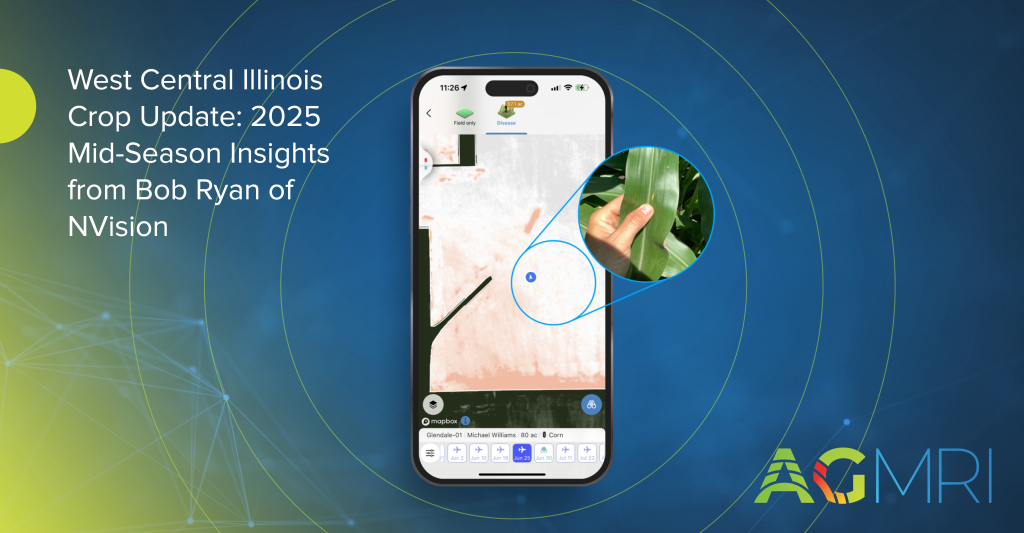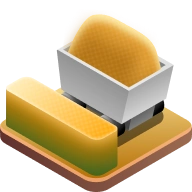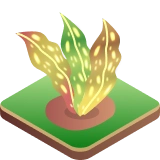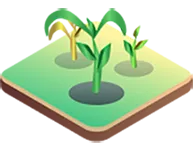Posted by Intelinair | Mid-Season Update from Bob Ryan, NVision | July 7, 2025
As we move through the heart of the growing season, Bob Ryan from NVision shares a boots-on-the-ground perspective from West Central Illinois, offering valuable insights into current crop health, management strategies, and key advice for growers during this critical phase.
Fungicide Season in Full Swing
“We’re right in the middle of fungicide season on corn,” Bob reports. “The large majority of our fields are tasseling, and we’re firing up helicopters, airplanes, and drones to get those fungicide passes done.”
With most of the corn fields now fully tasseled, the application of fungicides is critical. Bob notes that the yield potential remains “spectacular,” especially as they begin to assess ear development. “We’re seeing 20-around ears in many places,” he says, “which is a strong indicator of high yield potential.”
Managing Nitrogen Deficiency
Despite this optimism, some warning signs are starting to emerge.
“You can start to see some fields running a little short on nitrogen,” Bob explains. “The lower leaves are turning yellow as the plant cannibalizes them to finish the last two leaves at the top.” This visual cue signals to farmers that nitrogen levels may be insufficient to carry the crop through grain fill.
To address this, Bob and his team are supplementing their fungicide applications with a gallon of slow-release nitrogen, aiming to sustain grain fill and maintain top-end yield potential. “The plant is telling us what it needs. Our job is to respond to it,” he adds.
Watching the Weather and Root Development
Soil moisture is another growing concern. “We’re a little short on rainfall. It’s getting dry,” Bob notes. He points to two possible issues: limited water in the soil or shallow root development that prevents plants from accessing residual nitrogen deeper in the profile.
“A good rain could really turn things around,” he emphasizes. “One more big rain, and these yields could be spectacular.”
Leveraging Thermal and Crop Health Mapping
Technology is also playing a vital role in decision-making. “We’re using thermal and plant health maps on AGMRI,” Bob added. These tools help identify early signs of crop stress, even before visible symptoms appear in the field. “If the field tells us it’s under stress, we try to remove that stress—anyway we can.”
Disease Pressure and Scouting Advice
Bob concludes with a strong recommendation for growers to stay vigilant against disease pressure.
“The weather earlier this year was very conducive to disease,” he warns. “We’ve already seen some tar spot and gray leaf spot in our earliest planted fields. If growers aren’t planning a VT fungicide pass, they need to be out scouting.”
He also highlights thermal mapping as a powerful early indicator. “It may show signs of disease even before you can see it with your naked eye.”
Bottom Line:
With strong yield potential on the horizon, this is a critical time for growers in West Central Illinois. Proper fungicide timing, nitrogen management, and diligent scouting—complemented by precision tools like thermal mapping—are all key to preserving yield and crop health in the coming weeks.
Have Questions?
Feel free to reach out—we’d love to hear from you.













